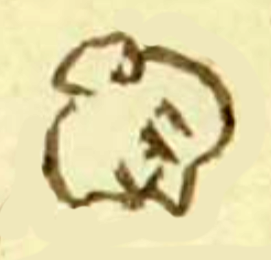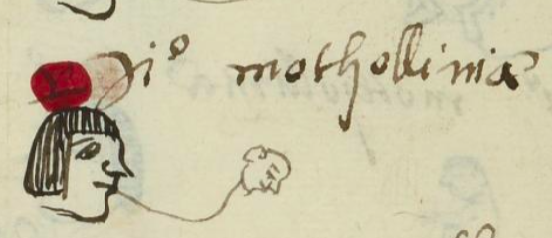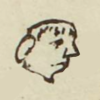Motolinia (MH788v)
This black-line drawing of the simplex glyph for the personal name, Motolinia (“He is Poor,” or "He is Afflicted," attested here as a man’s name) might also refer to a famous Franciscan friar. The glyph consists of a bald-headed man with his head tilted downward. His appearance could suggest poor or humble (motolinia).
Stephanie Wood
Fray Toribio de Benavente Motolinia is likely the person after whom this Nahua man is named, but if not, then he is just being called a “Poor Person.” Possible supporting evidence that Nahuas took the name of the friar Motolinis is that many men also took the name Toribio, and a few had other ecclesiastics’ names, such as “de Gante.”
The head tilt seems to be a phonetic indicator for toloa, to bow or lower the head, helping with the middle part of the name (-tol-).
Stephanie Wood
1560
Jeff Haskett-Wood
pobresa, humilde, nombres famosos, nombres de hombres

Motolinia, the name of a Franciscan missionary or a poor person, https://nahuatl.wired-humanities.org/content/motolinia
toloa, to bow or lower the head, https://nahuatl.wired-humanities.org/content/toloa
(una persona pobre o el nombre de un fraile Franciscano)
Stephanie Wood
Matrícula de Huexotzinco, folio 788v, World Digital Library, https://www.loc.gov/resource/gdcwdl.wdl_15282/?sp=651&st=image
This manuscript is hosted by the Library of Congress and the World Digital Library; used here with the Creative Commons, “Attribution-NonCommercial-ShareAlike 3.0 License” (CC-BY-NC-SAq 3.0).










